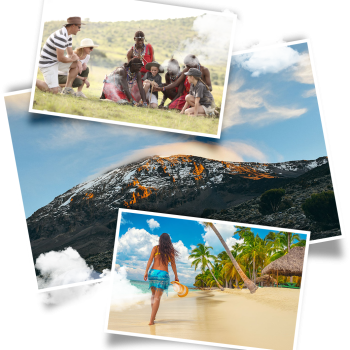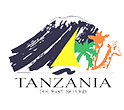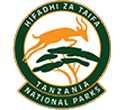CLIMBING KILIMANJARO
MACHAME
Kilimanjaro Machame Route Overview
Due to its popularity, this route can become very congested. Although it offers amazing views to the west of the mountain, we believe its popularity has slightly compromised its quality. It has surpassed the Marangu Route in terms of popularity.
Included & Excluded
- Transport in private vehicle
- Accomodation & Meals
- All Related Tour Fees
- Enough Drinking Water
- Government Taxes and levy
- Ground Handling Assistance
- International Flights
- Visa and Travel insurance
- Visa and Travel insurance
- Tips for Guides and Porters
- Personal expenses
Day 1
Starting at Machame Gate (1,800 meters), the ascent traverses a ridge through a thick montane forest. The richest forest on Kilimanjaro may be found here, and 96% of the mountain’s water comes from this region. This area can be very lush and lovely on sunny days, especially during the dry season. However, it can also be very muddy, especially if it has just rained. We stop for lunch at “Halfway Clearing,” a tiny gap in the trees, and then keep gaining altitude steadily. The gradient eases as gigantic heather gradually replaces the woodland close to the next camp and the ruins of Machame Hut (3,000 m.). If the nighttime clouds allow, we might get to see Kibo’s glaciated dome up close for the first time. [Walking for 6–8 hours]
Day 2
A shorter day that starts with a tough ridge climb to Picnic Rock, a small semicircular cliff. Here, in addition to being a pleasant rest area, you can see Kibo and the craggy rim of the Shira Plateau in spectacular detail. Reaching the Shira Plateau requires less incline on the trail to proceed. We set up camp close to Shira Hut (3,840 meters), which offers some of the best views on Kilimanjaro. It is situated close to the enormous Kibo volcanic cone, the Shira Plateau, and Mt. Meru, which appears to be floating in the clouds. [4-6 hours on foot]
Day 3
Walking across lava slopes beneath the glaciers of the Western Breach, leaving the moorland plateau behind, is part of a morning of gradual rise and panoramic vistas. We descend to the bottom of the Great Barranco valley (3,900 m) after lunch near the Lava Tower junction (4,550 m), where we have expansive views of the plains below and are protected by high cliffs. [5–7 hours on foot]
Day 4
We reach an undulating trail on Kibo’s south-eastern face, with stunning views of the Southern Icefields, after a tough ascent up the Barranco Wall. It is just a short distance to our camp at Karanga (4,000 m.), the last water stop on the approach to Barafu, which is in a narrow valley. The terrain transforms to scree, with pockets of rich vegetation in protected hollows. There is plenty of time to relax or go on a quick, optional acclimatization hike up the valley above the camp in the afternoon. [4-5 hours on foot]
Day 5
After a brief but arduous ascent out of Karanga, there is a straightforward trail on compacted scree that leads to Mweka Junction (4,150 m.). The plateau at the bottom of the South-East valley is our next destination after continuing our steady ascent to the Barafu campsite (4,600 m) (4,800 m.). The rest of the day is spent relaxing in anticipation of the last ascent before going to bed early. [4-5 hours on foot]
Day 6
Around one in the morning, we will begin our trek by torchlight so that we may reach the rim of the crater before daybreak. We will reach Stella Point (5,735 m.) in about five or six hours by making a leisurely, steady ascent on loose volcanic scree that has some well-graded zigzags. There, we’ll take a brief break to see the sunrise over Mawenzi. Those who are still feeling strong can make the two hour round trip from here along the crater rim to Uhuru Peak (5,896 m.), passing close to the stunning glaciers and ice cliffs that still occupy much of the summit area. Surprisingly quickly, the descent to Barafu, and after replenishing, we continue to descend to reach our last campsite, Millennium (3,800 m). The most of us won’t be awake enough to appreciate the stunning woodland that envelops the crowded campsite. [11–15 walking hours]
Day 7
A steady descent through a beautiful tropical forest with a well-built trail that is alive with bird singing and has lush undergrowth with significant botanical interest. Our path descends steeply to the Mweka National Park gate (1,650 m). We next proceed 15 minutes further via coffee and banana farms to Mweka village, where our van is waiting, after officially leaving the national park. The pool, the shower, and the drink are all tantalizingly near by! [4-6 hours on foot]
WHY CHOOSE US
Professionalism
The most experienced and customer-focused guides & staff in the industry
Tailor-made Experiences
We believe in personal Experience, For each traveler we customize the trip to his/her exclusive needs

Responsible Travel
Our commitment to the environment & local communities is unmatched
Top Notch Accommodations
We have careful selected the Hotels, Lodges and Camps we use, We believe in a good rest during an adventure




